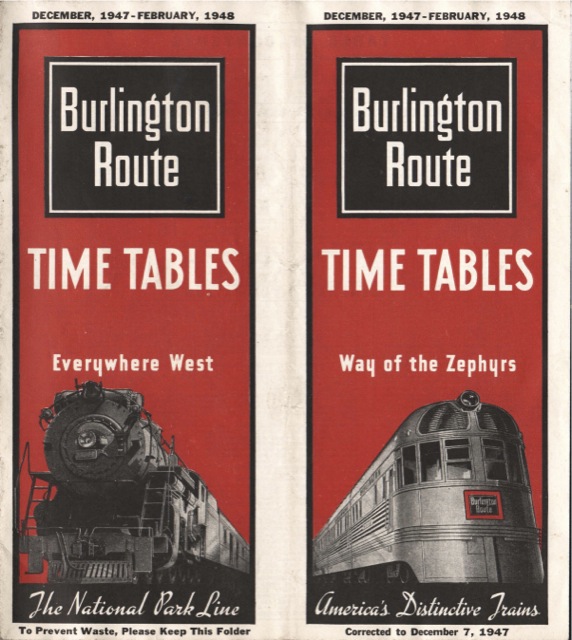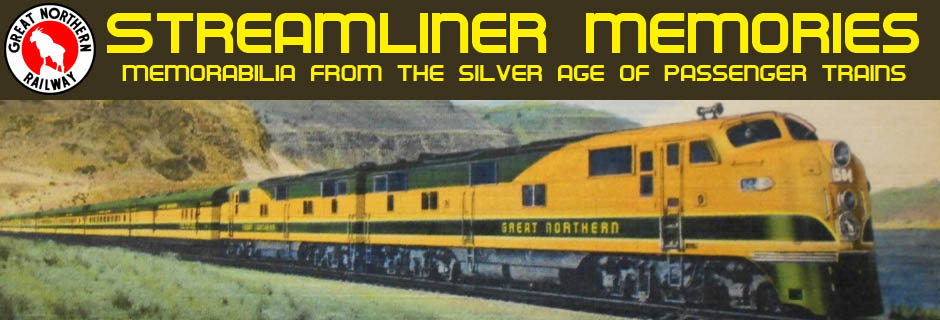This timetable provides a snapshot of the Burlington during the post-war transition period. The Empire Builder had been streamlined, and the Twin Zephyrs had some of the nation’s first dome cars. But the California Zephyr had yet to be introduced and the North Coast Limited was still a heavyweight train.

Click image to download a 28.6-MB PDF of this 36-page timetable.
The timetable opens with condensed schedules for six transcontinental trains: the Empire Builder, Oriental Limited, North Coast Limited, the Northern Pacific Alaskan–identified here only as trains 49 and 22 on the Burlington, 3 and 4 on the NP–the Exposition Flyer, and trains 42 and 43–which timetable 12 names, in tiny print, the Adventureland–between St. Louis and the Pacific Northwest via Billings. This is followed by Chicago-Denver, Chicago-Twin Cities, other Chicago trains, trains out of St. Louis, and trains out of Denver.
Since it was 13-1/2 hours slower than the streamlined Empire Builder, the North Coast Limited departed Chicago at about the same time as the Oriental Limited, while the Empire Builder departed about the same time as the Alaskan. Even the Dieselized Oriental Limited was 15 minutes faster to Seattle than the North Coast Limited. The slow-poke Alaskan takes 23-1/4 hours longer to get from Chicago to Seattle than the Empire Builder. Seattle rail fans must have enjoyed all four trains arriving between 7:15 am and 8:00 am.
Meanwhile, the Exposition Flyer had a schedule that was clearly inferior to that of the future California Zephyr. Advertised as using the Moffat Tunnel route, westbound the train sat in Denver for 5-1/2 hours, apparently so it could connect with the Royal Gorge in Denver and then allow both trains to meet again in Salt Lake City. That wasn’t an issue eastbound as the Burlington had plenty of Denver-Chicago trains for the Royal Gorge to connect with. The Expo Flyer also went through both the Feather River Canyon and Utah at night, allowing daylight views of some of the Colorado Rockies depending on the time of year.
In addition to a page of Colorado & Southern lines and a page of Wyoming trains, the timetable includes seven pages with more than 50 branch lines, few of which have yet been replaced by buses. The Denver-Boulder schedule had eight buses per day each way, down from ten in 1946.
